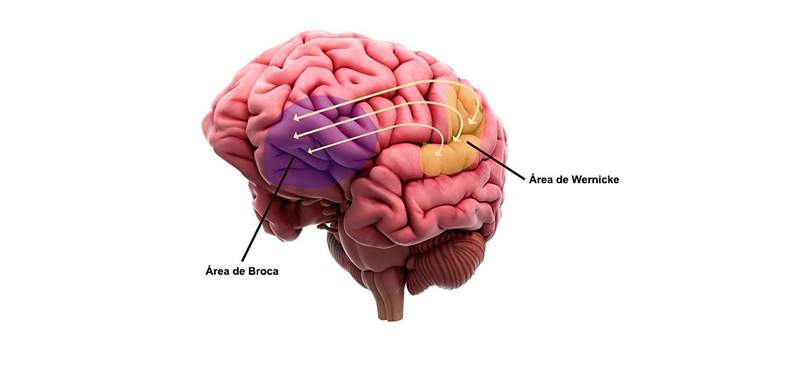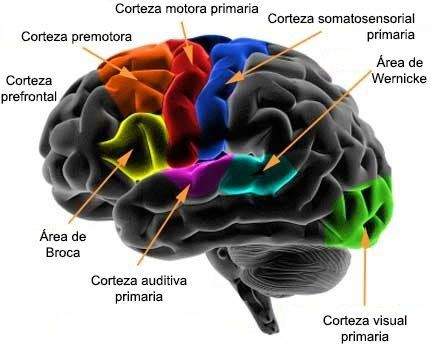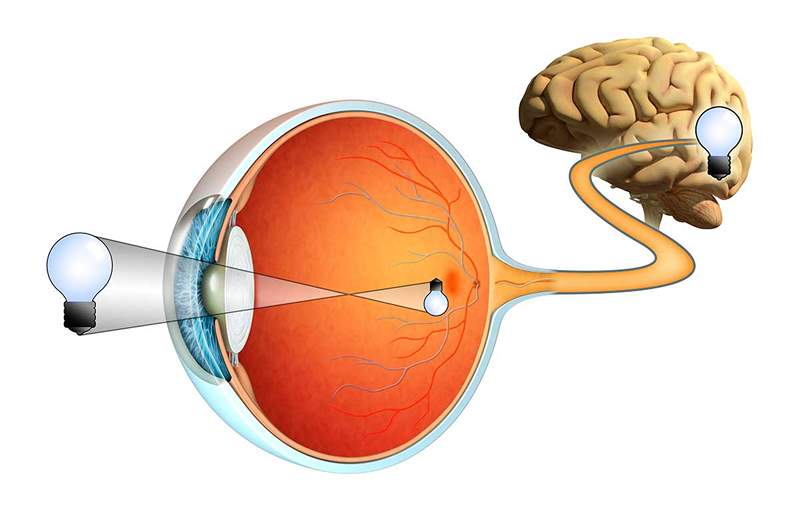Wernicke's area and its relationship with language

- 2274
- 717
- Gregory King
The Wernicke area is a region of the brain located in the left hemisphere, specifically in the posterior posterior temporal cortex. This area has been related to language processing and is considered essential for the understanding of spoken and written language.
Content
Toggle- How the Wernicke area was discovered
- Anatomical location of the Wernicke area
- Wernicke area function
- Wernicke's aphasia
- Bibliographic references
How the Wernicke area was discovered
The neurologist Carl Wernicke was the discoverer of the function of this region of the brain. He did it while watching individuals with damage to the posterior temporal lobe of the brain.
The first neuroscientists were interested in discovering where certain brain skills were located. One of the pioneers of this investigation was a French neurologist named Paul Broca. During the 70s, Broca discovered a region of the brain associated with spoken language production. He realized that damage to this area generated serious problems in language production.
Broca described that a patient of his, known as Leborgne, could understand language, but could not speak correctly, just say isolated words and some that other statements. When Leborgne died, Broca examined his brain and found an injury in an area of the frontal lobe. This area of the brain is now known as the Broca area and is associated with speech production.
Approximately ten years later, a neurologist named Carl Wernicke identified a similar type of problem, in which affected patients could speak but could not understand language.
When examining the brains of these patients, he observed injuries in a union of the parietal, temporal and occipital lobes. This region of the brain is now known as the Wernicke area and is associated with the understanding of spoken and written language.
Anatomical location of the Wernicke area
The Wernicke area is located in the left cerebral hemisphere, in the posterior upper temporal cortex, specifically in the upper temporal turn and the upper temporal groove. It is located near the primary auditory association area, which processs auditory information, and is also related to other brain areas involved in the production and understanding of language, such as the Broca area, the lower frontal circumvolution and the dorsolateral prefrontal cortex. Together, these brain areas form a language processing network that is crucial for speech and understanding of language in humans.

At the bottom of the left frontal lobe is the Broca area, which controls the motor functions related to speech production. Together, these two areas of the brain allow us speak and interpret, process and understand spoken and written language.
The Wernicke area is the region of the brain that contains the motor neurons involved in the understanding of discourse. As is generally in the posterior third of the upper temporal convolution of the left hemisphere of the brain, it is close to the auditory cortex. It is therefore especially important for the understanding of speech sounds and is considered receptive language, or the language comprehension center.
 Explanation of visual processing and ventral and dorsal currents
Explanation of visual processing and ventral and dorsal currents Wernicke area function
Specifically, the Wernicke area is responsible for the semantic and syntactic interpretation of spoken and written language. That is, this area is the responsible for analyzing the meaning of words and phrases and integrating that information With hearing and visual information to produce a coherent understanding of language.
Thus, Wernicke's area basically allows us to understand spoken language. Helps to understand speech and provide us the right words to express our thoughts. The main functions of the Wernicke area are:
- Language understanding
- Semantic processing
- Language recognition
- Language interpretation
When there is a problem in this area, the person can produce speech, but cannot understand the speech of others. This is called Wernicke Apsia.
Wernicke's aphasia
Wernicke's aphasia is a language disorder that It affects the understanding of language and the production of significant language. People with Wernicke's apasia have difficulty understanding spoken language, although they can produce words, phrases and words sequences. While these emissions have the same rhythm as normal speech, they are not a language because information is not transmitted.
People who suffer from this type of aphasia They can produce a natural speech, but that largely makes sense. This type of aphasia is also known as receptive aphasia, fluid aphasia or sensory aphasia. This type of aphasia affects spoken and written language.
Thus, people with Wernicke aphasia can often produce a speech that sounds normally and grammatically correct, but the real content of their speech makes little sense. Non -existent and irrelevant words often appear in the sentences they produce, because it is actually empty of content. It is characterized by circumlocutions, with a high incidence of vague words, neologisms and in general a "meaningless word salad".
Bibliographic references
- García-Porrero, J. TO., & Hurlé, J. M. (2010). Human Anatomy: Text and Atlas in Color. Pan -American Medical Editorial.
- Gómez, e. (2002). Afasias and language disorders: clinical and therapeutic aspects. Elsevier.
- López-Barroso, d., & De Diego-Balaguer, R. (2018). Language processing: a cognitive and neural perspective. Neurology Magazine, 66 (10), 317-324.
- Roca, m., Torralva, t., & Manes, F. (2012). Neuropsychology of apasias. Psychology and Neuroscience, 5 (1), 69-84.
- Sandoval, v., & González, M. (2010). Language and communication disorders. Pan -American Medical Editorial.

